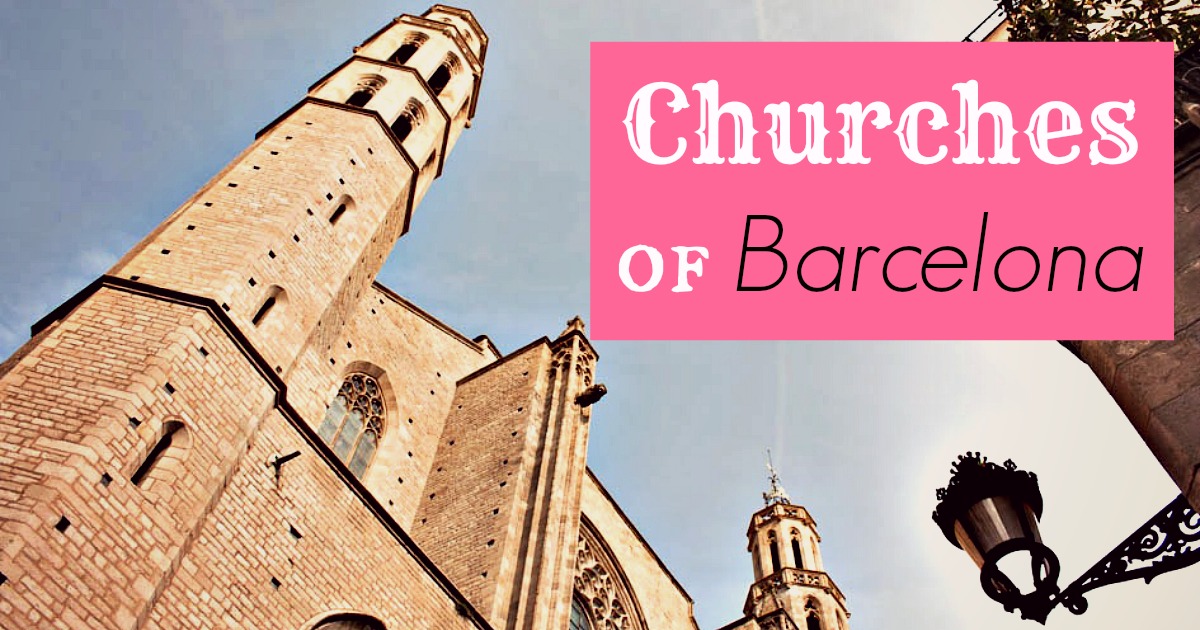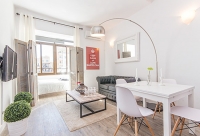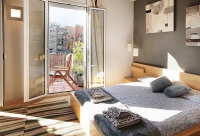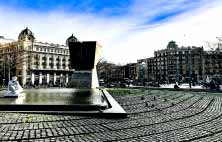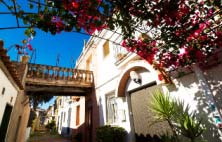If you really want to know more about the local culture and the beautiful architecture of Barcelona, you can not miss a visit to the most beautiful and important churches of the city. Many are scattered throughout different neighborhoods in Ciutat Vella each side of Las Ramblas - The Gothic Quarter and Raval, both areas with a long-running history that have roots in ancient times, but there are also some outside these areas too!
Here we summarize churches worth visiting on your trip to the magical and charming capital of Catalonia. To help you find them easily, they are ordered by areas:
Blogger insights: Megan Jerrard mappingmegan.com
.jpg)
The Sagrada Familia is a tourist highlight, and as such sees huge crowds visit each day. Pre-book your entrance tickets online and in advance, at least a day before you arrive - sometimes the queues to get in can stretch right around the block!! You must dress appropriately to gain entrance to the church, and the dress code requires no bare shoulders, and no shorts or skirts above the knee. This is fairly typical of any church in Europe and you could be denied entry otherwise.
Churches in Eixample
The Eixample district - whose name literally means expansion - is a large area north of Plaça de Cataluña, split in left and right by Carrer de Balmes near Passeig de Gràcia. This district was created in the mid-nineteenth century , when the city began to widen and expand beyond the Medieval walls a uniform structure that's distinctive and immediately recognizable from above.
In the twentieth century, the area continued to grow and expand to become the heart of the architectural Catalan Modernisme style. Today, amongst the designer shops and trendy clubs, it is home to the most Gaudi and modernist buildings than any place in the city. Here you will find - apart from one of the most famous modernist places of worship in the world - a small Gothic church.
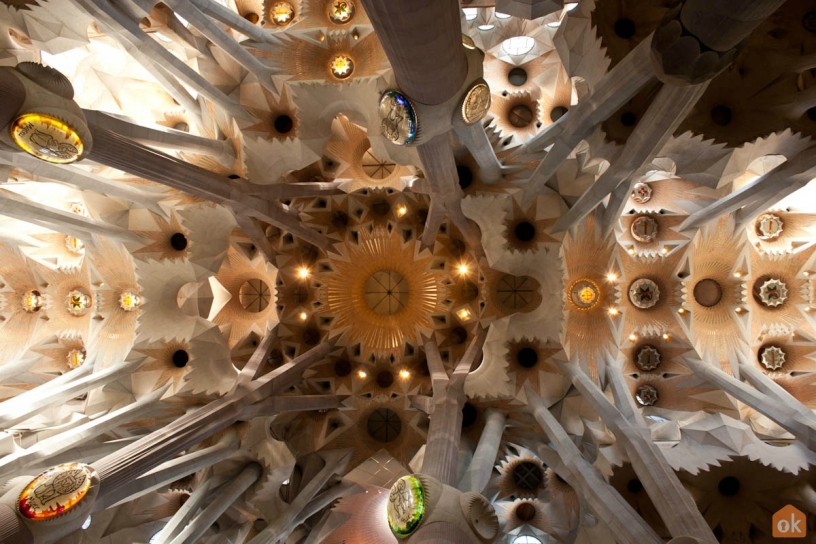
The Sagrada Familia
The Sagrada Familia needs no introduction. It is the life work of Gaudí and the most visited building in Catalonia. You have to pay to visit this church.
The church was consecrated by Pope Benedict XVI and is still under construction, expected to be completed in 2026. From the top of its towers that are immersed in a kaleidoscope of colors, you can enjoy a beautiful view of Barcelona and beyond...
Església de la Concepción
This small Gothic church off the usual tourist itinerary, making it especially more interesting. In addition, it really stands out amongst the modernist buildings.
It is accessed directly from the Carrer d'Arago and the cloister dates to the 15th century, but was moved to the current location in the late 19th century. The church dates from the 14th century and its bell tower of San Miguel was built between the 11th and 16th centuries. Next to the church is Maria de Jonqueres monastery with a wonderful Gothic cloister inside, one of the largest and most beautiful that the city has to offer.
If you want to come work or have a holiday in Barcelona but you have a small budget, it's possible! Look at our cheap accommodations in Barcelona.We offer apartments of different types, renovated and well furnished in all areas of Barcelona!
Churches in the Gothic Quarter...
Amongst the narrow streets of the Gothic Quarter you'll come across ancient and historic stone structures dating from the roman to neo-gothic. This area has even been the home to artists like Picasso and Miró.
In this neighborhood you can visit a majestic Cathedral and many other churches, all in different architectural styles.
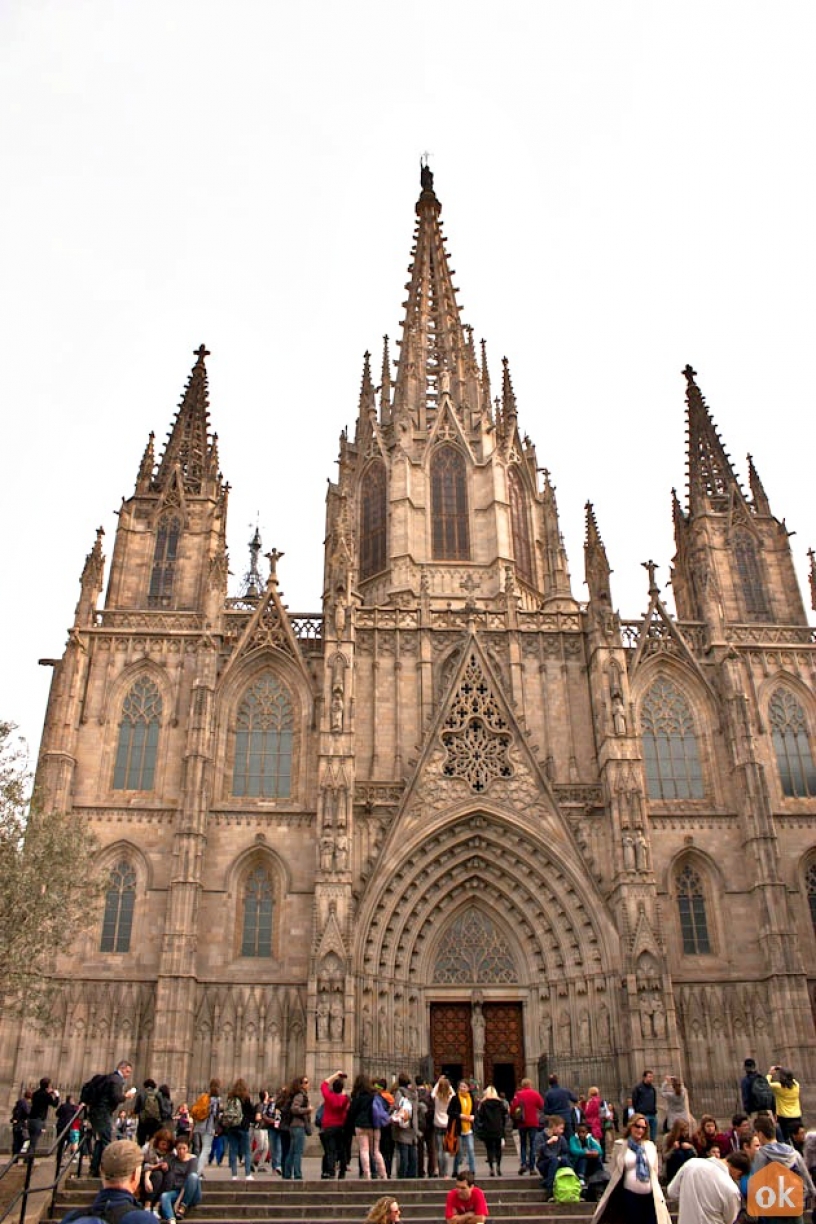
Barcelona Cathedral (La Catedral de Santa Eulalia de Barcelona)
Barcelona Cathedral is at the heart of the Gothic Quarter and is said by many to be without a doubt the biggest expression of gothic architecture of Barcelona. It has a rich history owing to the fact that the site it was built spans 1000+ years. But don't be fooled! The cathedral today is not the same as the one that was built ages ago, rather the facade we see today was renovated as part of the 1929 Universal Exhibition in the Neo-gothic style, not original Gothic style which was much more plain.
The cathedral is dedicated to the Saint John of the Cross and Saint Eulalia, a patron saint of the city who was martyred here by the Romans. Proof of this is the geese by the cloister fountain (there are 13 to remind us Saint Eulalia was 13 when she was killed) and Saint Eulalia's crypt.
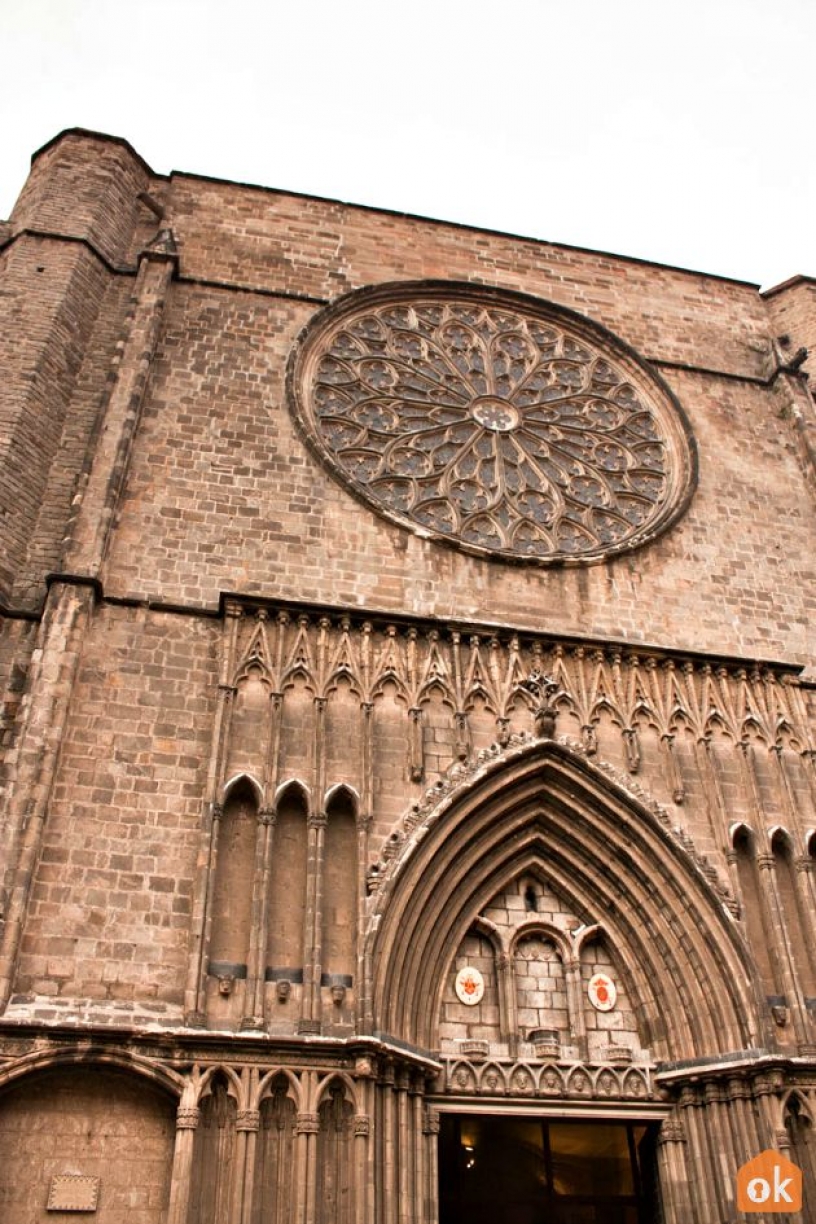
Basílica de Santa Maria del Pi
In the Catalan Gothic style, this church was built on top of a building of the proto-Christians before the V century, but the Basilica of Santa Maria del Pi we see today was completed in the sixteenth century. The facade features an enormous rose window that spans 10 metres in diameter. This alone is worth seeing. However, try not to miss the view from the Belfry at 55 meters high and well equipped with six large bells.
Basílica de la Mercè
Basílica de la Mare de Déu de la Mercè has Medieval origins, restored in the 18th century giving us an interested mix of Gothic, Renaissance, and Baroque styles. It is dedicated to the other patron saint of the city - Saint Mercè. She became joint patron saint of Barcelona after it was said she single handedly curbed the spread of plague in the city during the seventeenth century.
Església de Santa Anna
Founded as a monastery , this church has undergone numerous modifications over the cenuries, which would explain the mixture we can still see today including Romanesque and Gothic elements. It is a truly obscure church found on Placeta Ramon Amadeu a short walk from Plaça de Catalunya. It offers visitors who stop at the small cloister endless moments of peace away from the busy city.
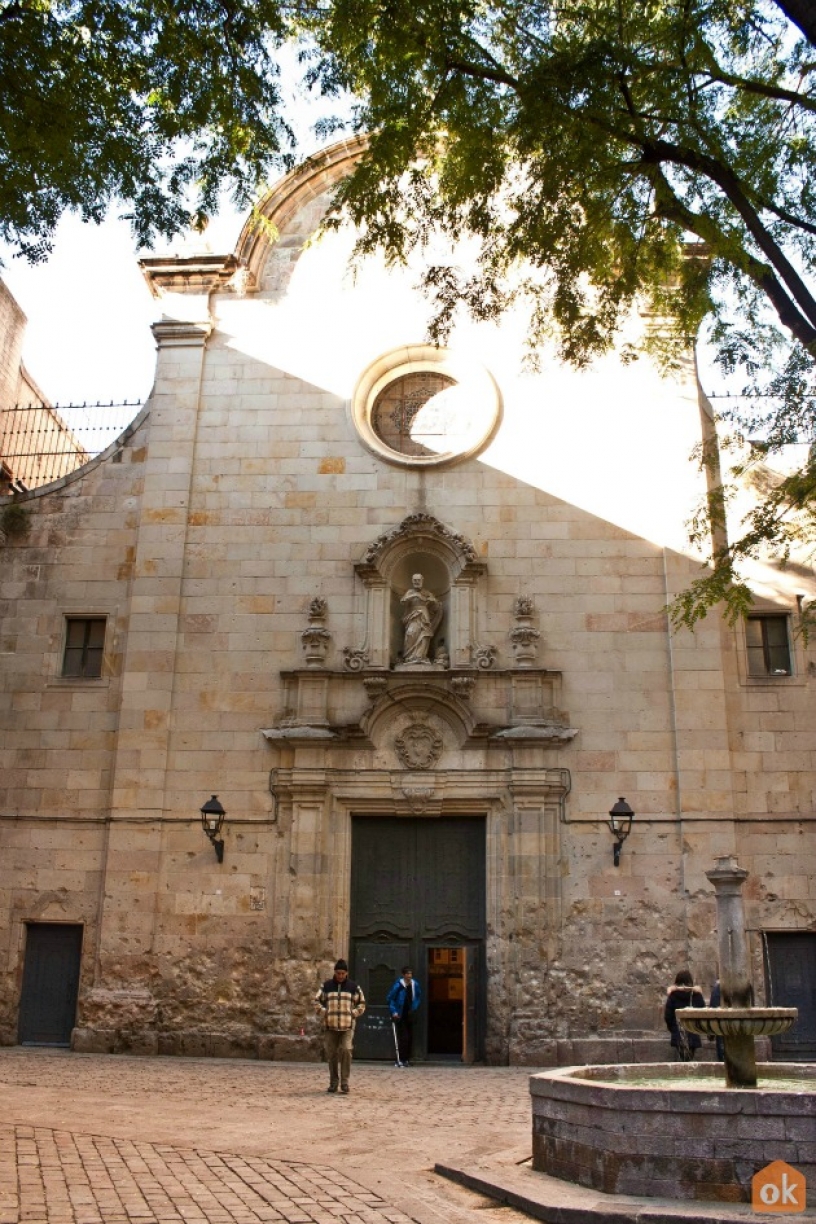
Església de San Felipe Neri
We continue with another church; another haven of peace in the heart of the Gothic city. This time we are on Plaça de Sant Felip Neri , a small lesser-known square. The history of this baroque church (so dear to Gaudí), is linked to a tragic historical event. In this square 42 people were killed after a bombing at the hands of the Italian fascist troops during the Civil War.
Capella Reial de Santa Agata
This 15th century chapel is located inside the Royal Palace on Plaça del Rei. It is found exactly by the Roman wall and was built by King Jaume II and his wife Blanca d'Anjou. Inside, near the altar, is an iconic Catalan painting made by Jaume Huguet during the fifteenth century.
Excursions in Barcelona
To make the most of Barcelona and fill your trip with unforgettable experiences and emotions, we offer you the excursions through the Catalan capital organized by our friends - the GetYourGuide team. Choose your excursion and fall in love with Barcelona:
Churches in the Born neigbourhood
The Born neighbourhood - or at least the loosely defined area between Barceloneta and Via Laietana - is today one of the most stylish and lively parts of the city, with its abundance of outdoor terraces, fashion boutiques, and nightlife, above all around Passeig del Born.
It was originally a working class district of the medieval city and until the early 20th century it was the stage for major demonstrations and political discourse. Among the narrow streets that compose it you will find the Palau de la Música Catalana, Picasso Museum, and a host of boutiques along the beautiful Carrer de Montcada.
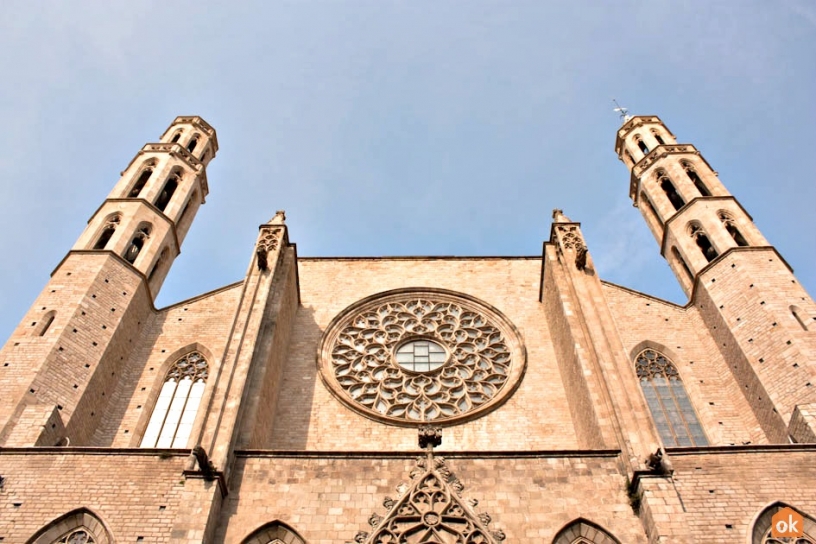
Santa Maria del Mar
Another example of the Catalan Gothic style is at the famous Santa María del Mar, whose implementation was carried out entirely by employees and residents of the port of Barcelona. It's probably for this reason that it is now dedicated to the sailors through its name.
The Basilica is breathtaking in its beauty. It is a lesser known Cathedra. Well, at least it was until it gained fame by becoming the backdrop of the novel by Ildefonso Falcones called The Cathedral of the Sea.
Churches in the Raval area...
Raval occupies the west of Ciutat Vella. It was once known as the most infamous and "red light" part of Barcelona, and in some respects still is, however much less so since the renovations to the area, like installed the popular MACBA (Museum of Contemporary Art Barcelona), CCCB (Contemporary Cultural Centre Barcelona), and the various small businesses and boutiques that have been set up into the area thanks to the lower rental costs. It has undergone a major facelift.
Thanks to this renovation Raval is included amongst the tourist districts in Barcelona, where old and new, popular and artistic manage to live together and create something different constantly. In this neighborhood you can find churches still known by few.
Església de Betlem
This is the most well known in Raval as it sits by Las Ramblas. It was destroyed in a fire in 1671, this Baroque church is located on Carrer Carme and is dedicated to Our Lady of Bethlehem. It is home to the Jesuit order, as indicated by the sculptures flanking the entrance, representing Ignatius of Loyola and Francisco de Borja, the founders of the order.
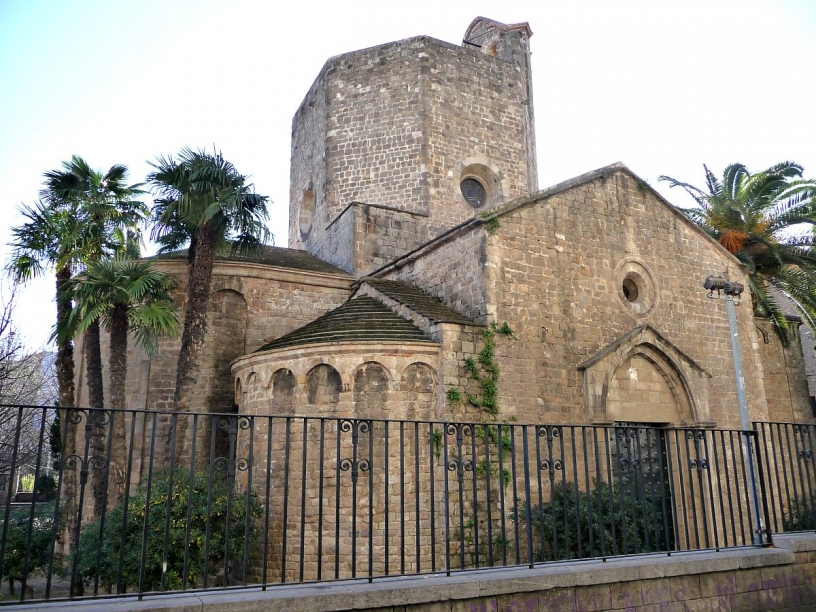
Església de Sant Pau del Camp
This church is found right at the centre of Raval and is one of the oldest churches in Barcelona according to historical documents. It's one of the few example of the Catalan Romanesque styles that have survived today in the city. This small temple has a beautiful outdoor patio and a Romanesque cloister with clear references in the interior to the century or so of Muslim reign in the city.
Església de Sant Agusti
The Baroque style of the interior - bright and airy - contrasts with the exterior facade that was never finished and almost in ruin. This is probably why this small Catalan masterpiece passes unnoticed.
Churches in uptown Barcelona
Uptown Barcelona for the most part is anything above Carrer de Mallorca. It includes Gràcia, Sant-Gervasi, Horta, and many other districts in its ranks. You can enjoy fantastic views of the city stretching up to the sea from some parts of these areas (in upper Carrer Muntaner for example). There are also areas of interest that you can't miss, including two fantastic churches.
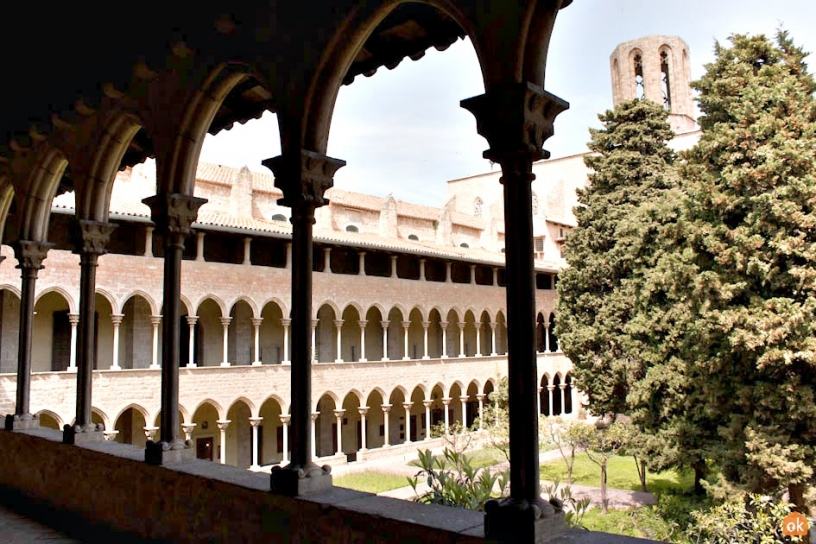
Monestir de Santa Maria de Pedralbes
This monastery is a place of peace outside the chaos of the city. Its was built during the 14th Century under orders of Queen Elisenda de Montcada, the third wife of King Juame II. The church has a single nave with a polygonal apse and beautiful polychrome rosettes. Sant Miquel chapel was painted by Ferrer Bassa in 1343, according to the model set out by the early Italians.
Temple del Sagrat Cor – Tibidabo
The peak of Tibidabo at 543 metres is one of the best viewpoints of Barcelona and it's also home to an old fun-fair in addition to the Temple del Sagrat Cor.
It's a huge building that is principally neo-gothic with hints of a modernist style throughout, seeing as construction started in 1902 and was completed in 1961. It sits crowned with a statue of Christ, destined for comparisons with the Christ statue in the crypt of Sacre-Coeur in Paris.
How to visit all these churches in 2 days.
If you are staying in Barcelona for only a few days and are interested in visiting these churches, here is a quick route to see them all in little time.
Day 1
Ciutat Vella is easy to walk and as it's not so large that you couldn´t visit the churches found around Raval while taking in the multicultural environment in just one morning. After walking through Raval, cross Las Ramblas and you're in the Gothic Quarter.
Here you can visit Barcelona Cathedral and other nearby churches. Enjoy the atmosphere of this district between the mysterious alleys that will take you on a trip back in time, before stepping back into reality at one of the many outdoor bars with the local favorite drink known as vermouth. If time permits, in the afternoon you can go to the Born area and visit Santa Maria del Mar.
Day 2
Start the morning with a visit to Monestir de Pedralbes. Head to Carrer d'Aribau by Plaça de la Universitat, where you can catch either the number 64 or 68 buses that will take you directly to Plaça de Pedralbes. From there you can get to the monastery in a 5-minute walk.
Nearby the Monastery is a station called Reina Elisenda. You can catch L6 here and change at Sarrià to take the S1 or S2 to "Peu del Funicular". Once you get off the funicular you can catch the 111 bus directly to the church at the top of Tibidabo. It will take around 45 minutes in total, but you can do the trip without spending loads as it's all included on one T-10 ticket journey!
If you still have time remaining...
- Església de Sant Pacià: In the district of Sant Andreu de Palomar. This neo-Gothic 19th century church by the architect Joan Torras i Guardiola also contains a beautiful mosaic from Gaudí, before he started his career.
- Parroquia de San Francisco de Sales: It is located in Eixample Dret on Passeig de Sant Joan.It is considered the most important work of the architect Joan Martorell i Montells - maestro of Antoni Gaudí. The church has a Latin cross layout, but several elements are reminiscent of the architectural language anticipated the modernist movement.
All that's left to say is... Have a great tour! ;)

